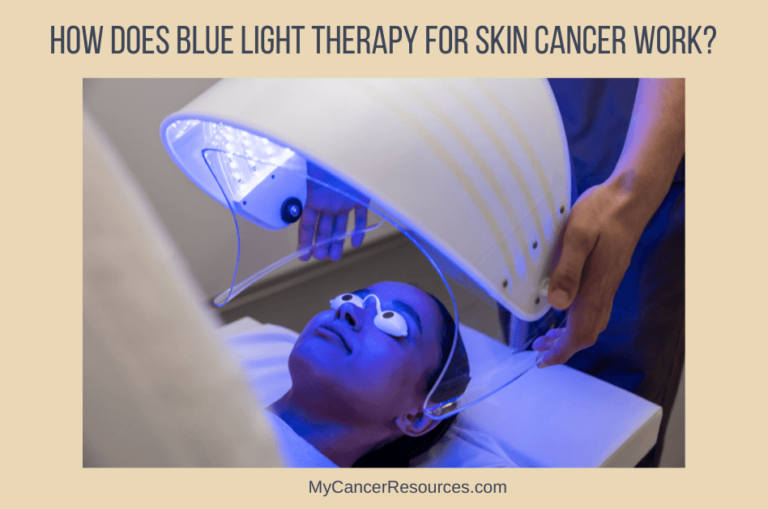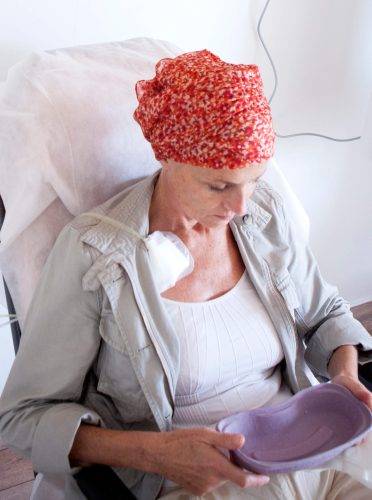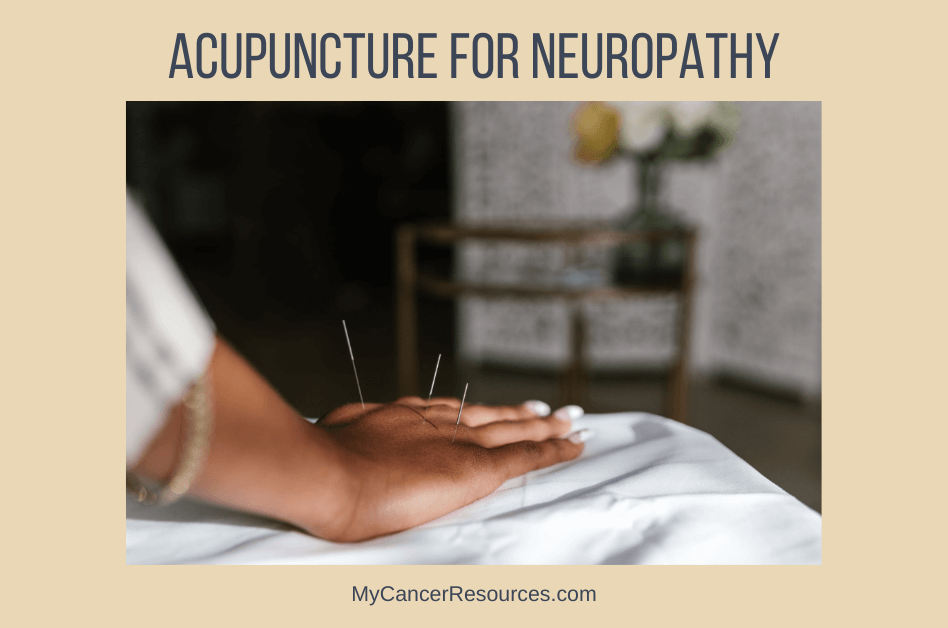
One of the ways pre-cancerous skin lesions and skin cancers can be treated without surgery is by using blue light therapy treatment. Blue light therapy for skin cancer works its magic by applying a topical solution to the affected area that is then activated by specific wavelengths of blue light.
This treatment doesn’t just address visible concerns on your skin surface; it penetrates deeper into the skin to discover and eliminate precancerous lesions that can’t be seen by the naked eye.
With our busy lives and regular exposure to the sun, your skin is under a lot of stress. Blue light therapy can be an important tool in to eliminate cells that can turn into cancer.
If you already have squamous or basal cell carcinomas, blue light treatment can be used to damage those cancerous cells while protecting healthy cells around the damaged area.
This article will describe the process so you know what to expect in a treatment session.
Key Takeaways:
- Non-Invasive Treatment: Blue light therapy offers a non-surgical option to combat skin cancer and sun-induced skin disorders like actinic keratosis.
- Deep-Reaching Effects: This therapy works below the skin surface, targeting and eliminating cells that have the potential to develop into cancer.
- Patient-Centered Approach: Treatments are tailored to the individual, considering their specific conditions and desired outcomes.
Understanding Photodynamic Therapy
Photodynamic therapy (PDT) is a type of light treatment that uses special drugs that are activated by lights to kill cancer cells.
While some photodynamic therapy uses red light, those are for cancers that are inside the body, like the esophagus or lung. This article will focus on blue light therapy for skin cancer.
The way blue light therapy works is a photosensitizing agent (a solution that is sensitive to light) is applied to the skin. It is absorbed by precancerous and cancerous cells, leaving healthy skin cells alone.
The solution typically used is aminolevulinic acid. This medicine is commonly known as Levulan Kerastick or Blu-u blue light therapy. This medicine is fully absorbed within a couple of hours.
When a blue light is exposed to the areas of the body where the topical medication has been applied, the solution is activated and produces a type of reactive oxygen. This destroys the abnormal skin cells while leaving normal cells alone.
Pros and Cons of PDT Treatment
PDT can work just as well as radiation and surgery in treating some pre-cancers and cancers. Here are some pros and cons to treatment with blue light devices:
Pros:
- It’s less invasive than surgery
- No long-term side effects
- Less expensive than other cancer treatments, and treatment for actinic keratoses and skin cancer is often covered by insurance
- Typically leaves little to no scarring
- It can be repeated in the same spot over and over again if additional treatment is needed (on the nose, for example), where this can’t be done with radiation
- It’s a great way to treat precancerous lesions or areas under the skin that cannot be seen, but could develop into squamous cell carcinoma or basal cell carcinoma. So this can help prevent those types of skin cancer from developing
Cons:
- Some may find the treatment to be uncomfortable
- It cannot be used to treat cancers that have spread to different places or take up large areas on the skin
- The photosensitizing agents make your skin very sensitive to light for a while, so you must follow specific instructions, wear protective clothing and avoid much sun exposure after blue light therapy treatment
The Procedure of PDT: A Step-by-Step Overview
Blu-u treatment is typically an outpatient procedure done in a doctor’s office.
You may be there for a few hours, depending on the health of your skin and how large the treatment area is.
You’ll first be examined to identify where on your body ak cells are found and/or any skin cancer lesions that have already been identified.
The topical solution is applied to the area(s) that will be treated. You’ll then hang out while the medication is absorbed into the abnormal cells. This is called the incubation period, and can take 1-3 hours.
Next, the targeted skin tissue is exposed to a special blue light source, typically for around 15-20 minutes.
This light activates the medicine and starts a chemical reaction that generates oxygen free radicals. These molecules are deadly to the abnormal cells, while sparing most of the surrounding healthy tissue.
Once the procedure is over, your doctor will provide you with instructions for care, including avoiding direct sunlight to ensure the best results for your treated skin.
Managing Side Effects and Aftercare
Some side effects of blue light therapy include:
- Sensitive skin post treatment
- The treated area may look sunburned, red and/or swollen
- Peeling or crusty skin is common as the scaly patches of treated cells flake off.
You’ll need to completely avoid direct sunlight for at least 48 hours after treatment, possibly longer, depending on your doctor’s recommendations.
The dermatologist will provide topical creams or ointment after the procedure. You’ll need to keep the treated area moistened. Infection risks are minimal, but if your skin shows any signs of infection, reach out to your doctor right away.
If you experience discomfort, talk to your doctor about taking over-the-counter pain relievers, like acetaminophen. Areas that have been treated should heal within a week, though this may take longer if the treatment area was large or if multiple areas were treated.
It’s important that you follow the doctor’s detailed aftercare guidelines, which will ensure a more comfortable recovery period and the best possible results for your skin.
Extending The Lifespan of Healthy Skin
Photodynamic therapy (PDT), including blue light therapy goes beyond managing precancerous conditions like actinic keratosis or treating localized skin cancer.
The benefits of this cutting-edge treatment extend well beyond immediate concerns, by serving as a preventative measure. It can slow down the clock on your skin’s aging process that’s been damaged from years of sun exposure.
By treating not only the visible lesions but also the microscopic damaged cells lurking beneath, PDT protects against the future development of squamous and basal cell carcinomas.
After Levulan blue light treatment for skin cancer, you’ll be encouraged to follow common sense guidelines for preventing skin cancer, including using skin protection and avoiding excessive sun exposure to further reduce your risk of skin cancer recurring or developing in other areas.
In all, blue light therapy is a non-invasive treatment that can be done as an outpatient to effectively treat precancerous and cancerous skin growths.
If you have areas of concern or have already been diagnosed with skin cancer, talk to your doctor about this type of treatment and see if it’s right for you.



